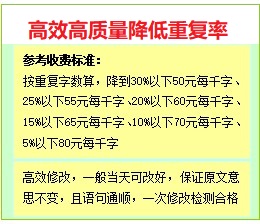①XRD
图2.7是试件M3(0.5%甲酸钙+0.5%多聚磷酸钠)和M4(0.5%甲酸钙+1.0%多聚磷酸钠)浸泡在5℃、5%浓度的硫酸镁溶液中300d后侵蚀产物的XRD图谱。侵蚀产物中主要晶相物质为钙矾石(E)和/或碳硫硅钙石(T)、石膏(G:d=7.6224,4.2806,3.0634Å)和方解石(C:d=3.0332,2.2855,1.8745Å),另有一定数量的单碳型水化铝酸钙(M)。M3图谱中石膏的特征峰高于M4,说明M3中石膏含量多于M4。方解石主要来自于填料。单碳型水化铝酸钙(MC:d=7.5250, 3.7570,2.5016Å)由水泥石中单硫型水化硫铝酸钙(AFm)转化而来。
②FTIR
图2.8是试样浸泡在5℃、5%浓度的硫酸镁溶液中300d后侵蚀产物的FTIR图谱。M4在500cm-1处特征谱带说明存在碳硫硅钙石,水泥石发生了TSA腐蚀,M3在该处有轻微振动,结合XRD和外观判断,M3仍以石膏型侵蚀为主;1400cm-1和875cm-1附近的特征谱带说明样品中存在方解石或者其他含CO32-的物质;1100cm-1附近的特征谱带由SO42-基团伸缩振动引起,说明了样品中存在石膏或者其他含SO42-的物质;在980cm-1附近存在一较宽特征谱带,有研究指出[10,14],该特征谱带为四面体配位的SiO42-基团伸缩振动引起,样品中可能存在一定数量的无定形水化硅酸钙;从500cm-1处特征谱带强弱判断,样品中碳硫硅钙石的含量M4(0.5%甲酸钙+1.0%多聚磷酸钠)﹥M3(0.5%甲酸钙+0.5%多聚磷酸钠)。
结合上文对空白样M0的分析,在水泥中同时掺加甲酸钙和多聚磷酸钠能延缓生成碳硫硅钙石,而不能阻止水泥石发生TSA破坏,M3抗TSA侵蚀的性能优于M4。罗忠涛认为[15],磷酸酯能抑制或延缓水泥水化产物CSH的结晶及钙矾石的生成,使得水泥石的水化程度不高,早期强度较低。多聚磷酸钠加入到水泥中起到缓凝的作用,水泥石结构松散孔隙较多,即使加入早强剂甲酸钙也不能有效改善水泥石的表面结构,有害离子的侵入导致侵蚀破坏的发生。M4中多聚磷酸钠的含量较M3多,因此水泥石表层密实度不高,抗腐蚀性能差。
3 结 论
①水泥石中同时掺加甲酸钙和硝酸钡可以有效的抑制碳硫硅钙石的生成,其效果跟外加剂掺量有关。掺0.5%甲酸钙+1.0%硝酸钡的水泥石抗硫酸盐侵蚀的性能优于掺0.5%甲酸钙+0.5%硝酸钡的水泥石。
②在水泥中同时掺加甲酸钙和多聚磷酸钠能延缓生成碳硫硅钙石,不能阻止水泥石发生TSA破坏,掺0.5%甲酸钙+0.5%多聚磷酸钠的水泥石抗TSA腐蚀的性能较好。
参考文献
[1] A. Skaropoulou, G. Kakali, S. Tsivilis. A study on thaumasite form of sulfate attack (TSA) using XRD, TG and SEM. Journal of Thermal Analysis and Calorimetry. Volume 84, Number 1.2006.4.
[2] DENG De-hua, XIAO Jia, YUAN Qiang, ec tl.On thaumasite in cementitious materials. Journal of Building Materials.2005.4.
[3] JIN Yan-nan, ZHOU Shuang-xi. Types and mechanism of concrete sulfate attack. Journal of East China Jiaotong University.2006.5.
[4] S Tsivilis,K Sotiriadis,A Skaropoulou.Thaumasite form of sulfae attack(TSA) in limestone cement pastes[J].Journal of the European Ceramic Society,2007,27:1711-1714.
[5] WANG Jian-hua, XIAO Jia, ZHAO Jin-hui. Sulfate corrosion of cement-based materials. Corrosion & Protection.2009.6.
[6] Schmidt Thomas.A thermodynamic and experimental study of the conditions of thaumasite formation.Cement and Concrete Research,v38,n3,p337-349,March 2008.
[7] S.Köhler,D.Heinz,L.Urbonas.Effect of ettringite on thaumasite formation.Cement and Concrete Research,v36, n 4,p697-706,April 2006.
[8] Baoguo Ma,Xiaojian Gao.Thaumasite formation in a tunnel of Bapanxia Dam in Western China Cement and Concrete Research,v36,n4,p716-722,April 2006.
[9] T Schmidt,B Lothenbach,M Romer,et al.A thermodynamic and experimental study of the conditions of thaumasite formation[J].Cement and Concrete Research,2008,38:337-349.
[10] J Aguilera,M T Blanco Varela,T Vazquez.Procedure of synthesis of thaumasite[J].Cement and Concrete Research,2001,31:1163-1168.
[11] E Ciliberto,S Ioppolo,F Manuella.Ettringite and thaumasite:A chemical route for their removal from cementious artefacts[J].Journal of Cultural Heritage,2008,9:30-37.
[12] P Pipilikaki,D Papageorgiou,M Dimitroula,et al.Microstructure changes in mortars attacked by sulphates at 5℃[J].Construction and Building Materials,2009,23:2259-2264.
[13] Q Zhou,J Hill,E A Byars,et al.The role of pH in thaumasite sulfate attack[J].Cement and Concrete Research,2006,36:160-170.
[14] I Pajares,S Martinez-Ramirez,M T Blanco-Varela.Evolution of ettringite in presence of carbonate,and silicate ions[J].Cement and Concrete Composites,2003,25:861-865.
[15] 罗忠涛,马保国,李相国.化学外加剂对水泥砂浆抗TSA性能的研究.武汉理工大学学报.2008:4.
LUO Zhong-tao,MA Bao-guo,LI Xiang-guo.Influence of chemical admixtures on Anti-TSA performance of cement mortars.Journal of Wuhan University of Technology. Vol.30 No.4 , Apr.2008.


